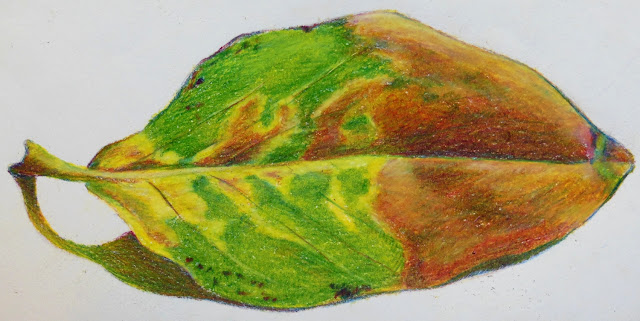|
Acrylic Skins. I did these on freezer paper. I had to leave these at Sertoma (way to wet to take home). So this is a photo of it wet and after it had run together a bit. The bottom white shape will be clear with blue lines and yellow dots. The white up higher is white paint. Anyway, make batches of these both transparent and opaque. For transparent skins use polymer medium, matte medium, pouring medium, or etc. (something that dries clear) and add dots of color into the mediums and move it around. You can also make opaque skins with paint colors.
 |

















































